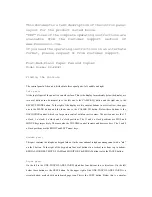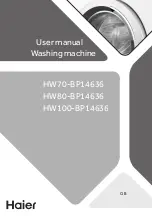
−
82
−
Trouble
Case (1)
Case(2)
Check and Corrective measures
Page
12. Problems with double chain stitch chain-off
thread.
Adjustment of loopers
Needle Guard
Position of the throat plate
Throat plate
Presser foot
Main feed dog
Double hooking
Thread tension
Refer to the related Standard Adjustment.
Refer to the related Standard Adjustment.
Correctly position the throat plate.
Repair or replace the throat plate, since such dent causes
chain-off thread to slip out.
Replace it, or correct it to make it flush with the presser
foot sole.
Buff the leading edge of the main feed dog.
Refer to the related Standard Adjustment for the return of
the double chain looper. See the threading digram for
correct threading.
Retard the cam timing.
Reduce the needle thread tension.
Slightly increase the both tensions.
Adjustment of the loopers for producing chain-off thread
without materials requires higher accuracy.
The needle guard (C) is too high, damaging loops.
The needle comes into contact with the front edge of
the needle hole in the throat plate.
The lateral position of the throat plate with respect to
the feed dogs is wrong, causing chain-off to drop in.
A dent exists on the flat part between the rear edge of
the needle hole and feed dog groove.
The rear pressure foot is indented and not flush with
the presser foot sole, so that it cannot hold chain-off
thread.
The leading edge of the main feed dog is too sharp and
cuts chain-off thread.
The needle thread is not drawn up fully because of the
insufficient return of the double chain looper or wrong
threading.
If the feed pitch is too small, the cam timing will be
advanced.
The needle is bend or chain-odd thread runs back due
to excessive needle thread tension.
Both the needle thread and looper thread tension are
too low.
Dent
20
22
20, 32
Summary of Contents for MO-6000S series
Page 78: ......








































